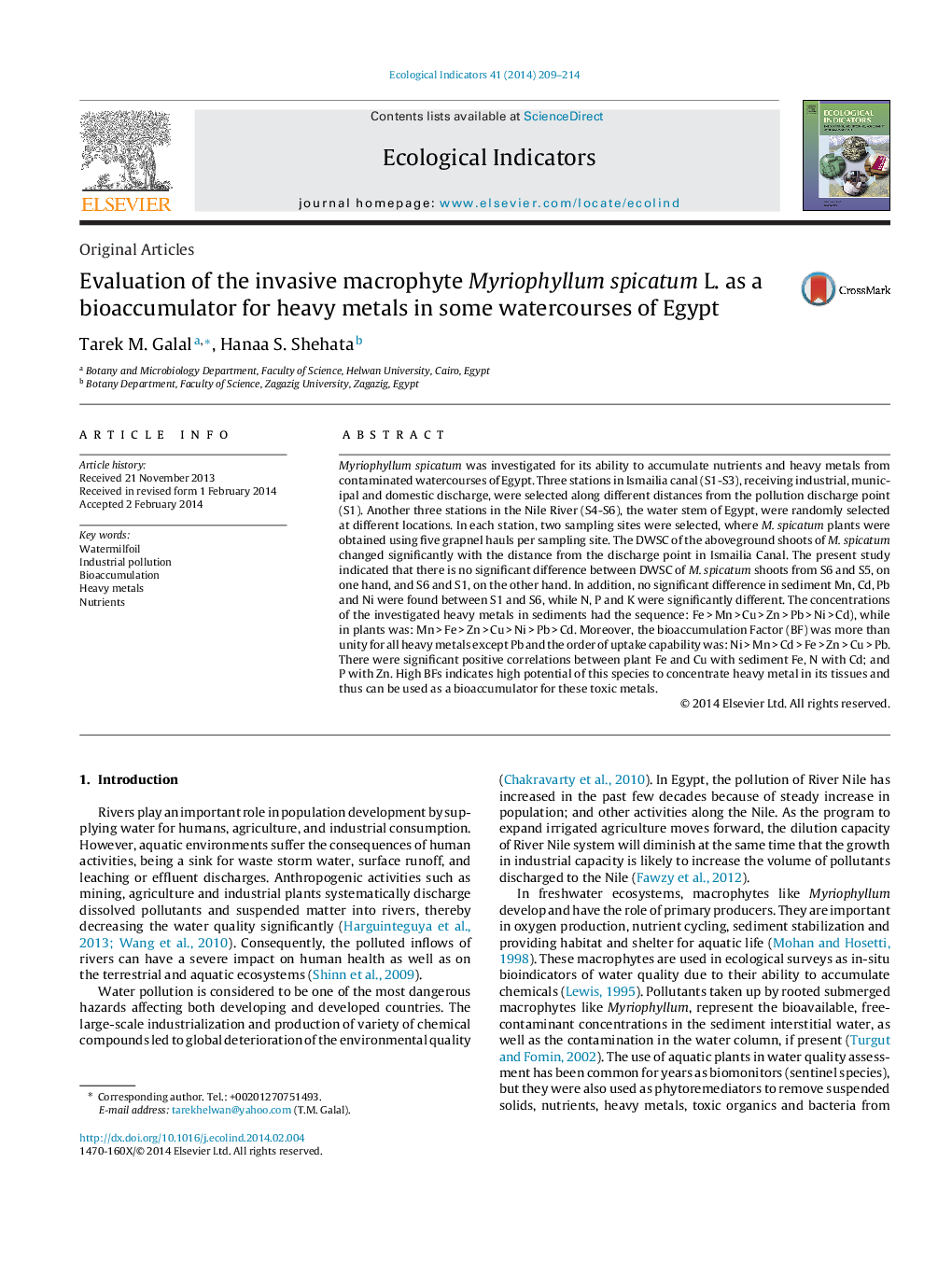| کد مقاله | کد نشریه | سال انتشار | مقاله انگلیسی | نسخه تمام متن |
|---|---|---|---|---|
| 4373210 | 1617160 | 2014 | 6 صفحه PDF | دانلود رایگان |

Myriophyllum spicatum was investigated for its ability to accumulate nutrients and heavy metals from contaminated watercourses of Egypt. Three stations in Ismailia canal (S1-S3), receiving industrial, municipal and domestic discharge, were selected along different distances from the pollution discharge point (S1). Another three stations in the Nile River (S4-S6), the water stem of Egypt, were randomly selected at different locations. In each station, two sampling sites were selected, where M. spicatum plants were obtained using five grapnel hauls per sampling site. The DWSC of the aboveground shoots of M. spicatum changed significantly with the distance from the discharge point in Ismailia Canal. The present study indicated that there is no significant difference between DWSC of M. spicatum shoots from S6 and S5, on one hand, and S6 and S1, on the other hand. In addition, no significant difference in sediment Mn, Cd, Pb and Ni were found between S1 and S6, while N, P and K were significantly different. The concentrations of the investigated heavy metals in sediments had the sequence: Fe > Mn > Cu > Zn > Pb > Ni > Cd), while in plants was: Mn > Fe > Zn > Cu > Ni > Pb > Cd. Moreover, the bioaccumulation Factor (BF) was more than unity for all heavy metals except Pb and the order of uptake capability was: Ni > Mn > Cd > Fe > Zn > Cu > Pb. There were significant positive correlations between plant Fe and Cu with sediment Fe, N with Cd; and P with Zn. High BFs indicates high potential of this species to concentrate heavy metal in its tissues and thus can be used as a bioaccumulator for these toxic metals.
Journal: Ecological Indicators - Volume 41, June 2014, Pages 209–214